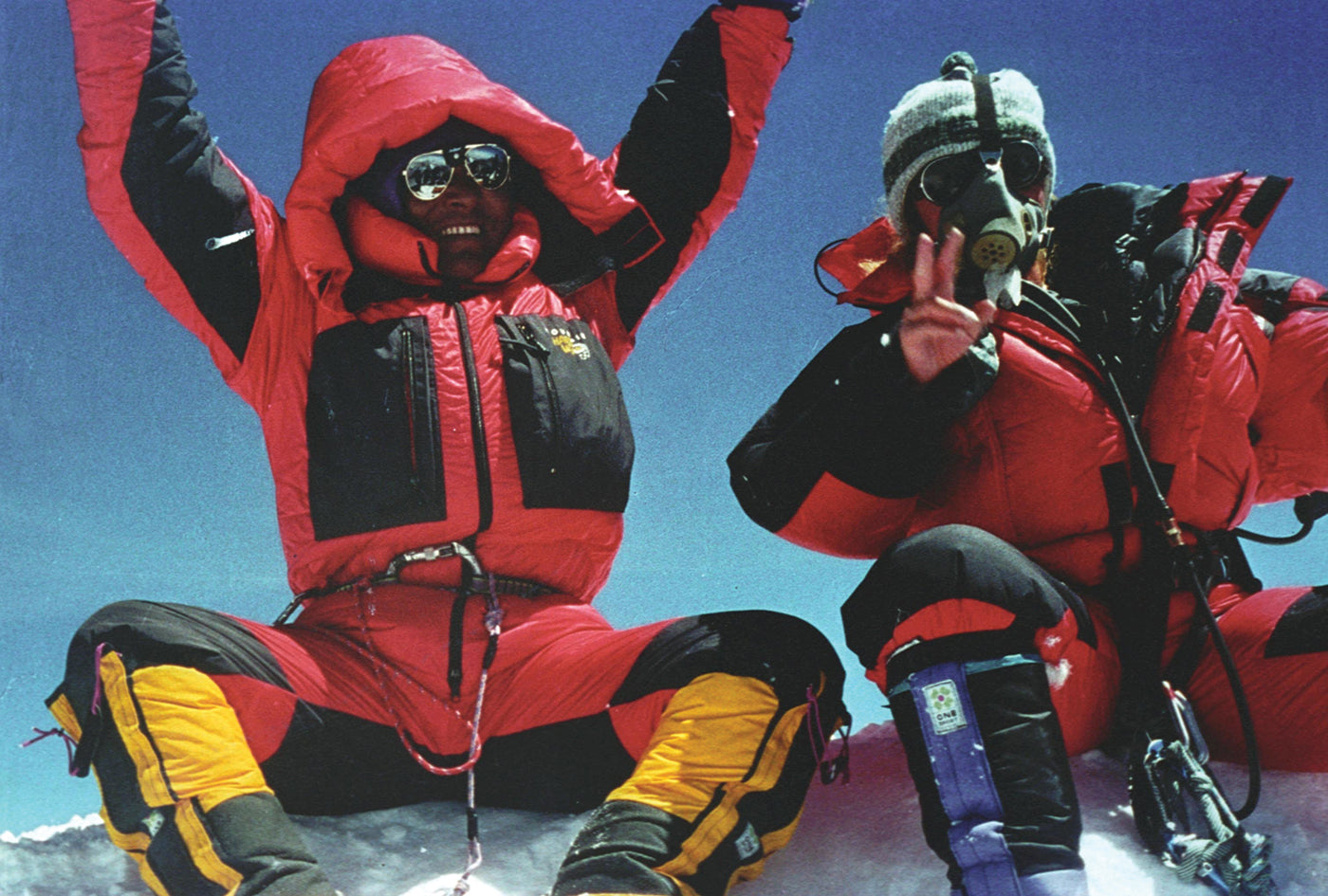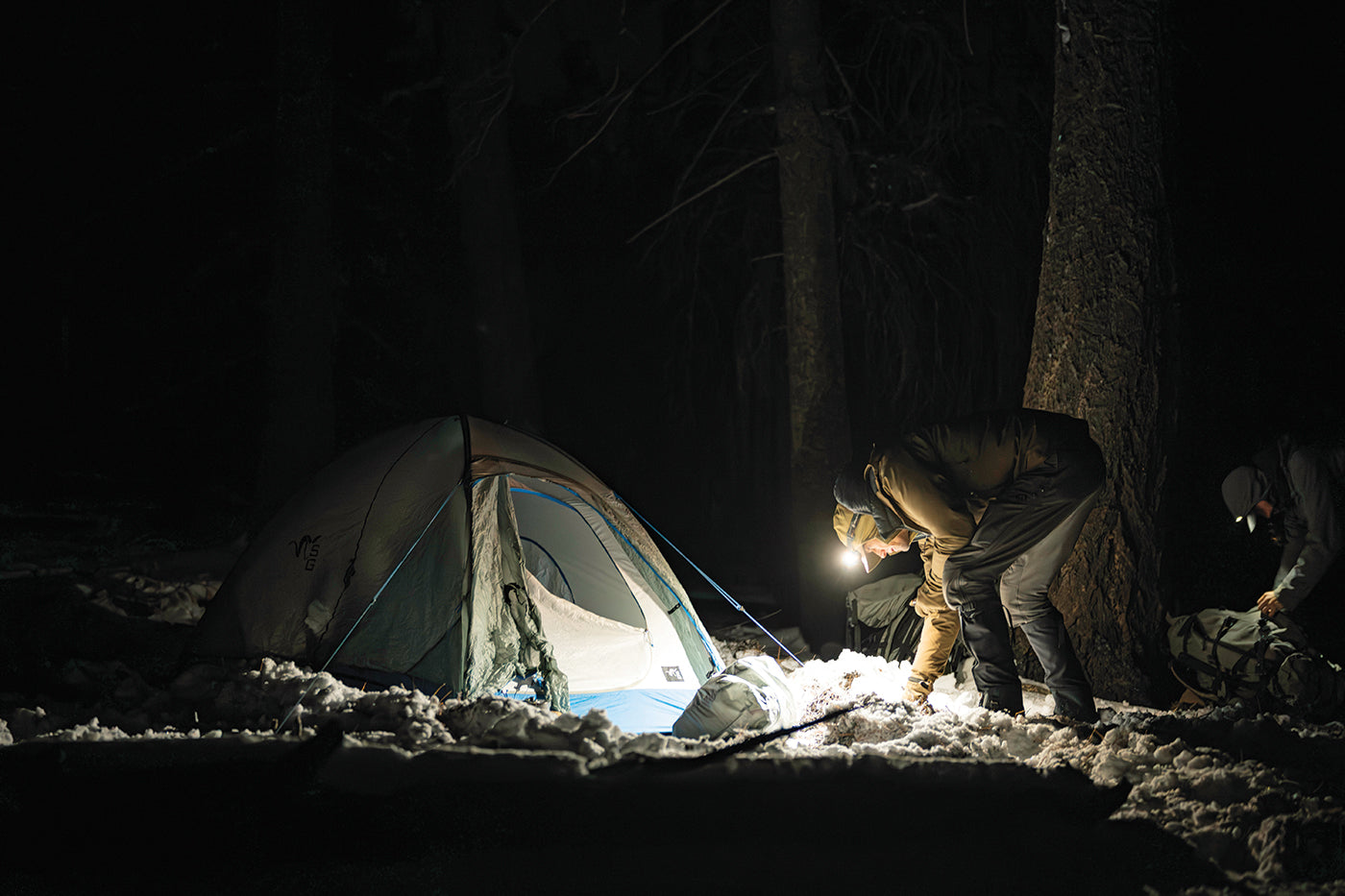From Everest to Elk Country
Partnering with a tent-making legend to create essential tools for backcountry hunters.
Stone Glacier was born from a culmination of backcountry hunts that left our founder Kurt Racicot cursing his pack and thinking there had to be a better way. Years later, he built his first run of 60 Stone Glacier packs and set the company in motion to serve a growing number of hunters committed to pushing their limits in the mountains.
With the company and a full line of ultralight, load-hauling packs firmly established, Stone Glacier expanded our offerings to meet other demands of mountain hunting. Tents and shelters were the natural next progression. You just don’t go into the mountains, especially in dicey weather, without a shelter you can rely on. Tents are must-have tools for our core consumer: the backcountry hunter.
We knew we wanted to build tents that were as strong, lightweight, and practical as our backpacks. Similar to packs, tents are highly technical pieces of equipment. Early on in the process of designing and building our first tent prototypes, we decided not to go it alone.
 Kurt Racicot in the SG Dome 6P base camp tent on an Arizona elk hunt. Photo by Sam Averett
Kurt Racicot in the SG Dome 6P base camp tent on an Arizona elk hunt. Photo by Sam Averett
“We have lots of experience living in a tent,” Kurt explains, “but why wouldn’t we partner with someone who has been doing it for decades? We set egos aside and became brutally honest with ourselves. We knew what we wanted in a tent, but we also understood that partnering with an experienced tent designer would lead to a better product for our customers.”
With this in mind, we began the search for a partner. All roads led to outdoor gear pioneer (and legend) Martin Zemitis. Martin is known throughout the mountaineering community as the best brain in the tent business, and we had a direct connection to start a conversation with him thanks to Stone Glacier President Jeff Sposito’s stepdad Jack Gilbert. Jack worked in the outdoor industry since the 1960s. After two decades working with The North Face, he co-founded Mountain Hardwear in 1993 and eventually worked with Martin. Jack put us in touch with Martin, and we floated him the idea of collaborating on a tent program. He was open to the idea, and we began the conversation about what the collaboration could look like.
Bringing Two Mountain Worlds Together
Kurt Racicot describes the decision to collaborate as a reality check that became the catalyst for innovating tent systems that are specialized for mountain hunting.
“We try to provide the best product for our customers,” he says. “Can we design the best of everything, or are we going to be honest and realize that no one is the best at everything?”
Martin Zemitis has spent the lion’s share of his life designing and building outdoor gear for extreme mountain athletes. Since 1977, he has designed technical sleeping bags, packs, and tents. He started in high school with a sewing machine, pattern paper and fabric. He sewed accessories for backpacking and cross-country skiing, and he began dabbling in tents then too. The experience touched off a lifelong quest to create and improve outdoor gear.
Martin spent the first phase of his career designing gear for The North Face, Sierra Designs, and Mountain Hardwear. He designed packs and sleeping bags but found his calling in designing the most bombproof tents in the mountaineering world. Most notably, he designed the Trango Series of tents. He also designed the tent Babu Chiri Sherpa used to camp at the summit of Mt. Everest without supplemental oxygen in 1997 — a feat that has not been repeated.

Babu Chiri Sherpa with a client on the summit of Mount Everest in 1999.
“I am passionate about improving products and solving design problems that will benefit serious users,” Martin says. “I’ve spent my life making gear for many of the most extreme mountaineers (and Sherpas) in the world. A Mountaineer friend of mine, Robert Link, always said ‘You have to get it right because in the mountains you are only a millimeter of fabric away from freezing to death.’”
Martin spends several months every year in the woods and on the river testing gear — a commitment to both understanding and being the end user that fit perfectly with Stone Glacier. In short, Martin knows how to design and build some of the strongest tents in the business in part because he lives the lifestyle of his target customer.
“After talking with Martin and seeing the designs, I told my team we needed to work with them,” Kurt says.
The feeling was mutual.
“My decision to work with Stone Glacier was based on the Stone Glacier crew being gearheads, the fact that they make high-end packs — and my trust in Jack,” Martin says. “And their customers are very serious users and understand our technical designs.”

Martin Zemitis in his product studio. Photo: Todd Kerr, Berkely Times
Martin was working on a new design at the time — the patented WebTruss™ system — and he sent Kurt a prototype tent to use that fall.
“When I first saw the WebTruss™ design, that’s when it clicked for me,” Kurt says.
Since 2017, the SG team has been working with Martin and his team to create ultralight tents and shelters for backcountry hunters. This includes incorporating the modular mindset that allows hunters to pick and choose gear based on the hunt, terrain, and weather, as well as reinforcing stress points and using quieter fabrics.
“We bring our ideas, from a hunting perspective, to Martin,” Kurt says. “From a production standpoint, Martin puts the ideas into the tent.”
Innovating Hunting Tent Design
When Martin’s team designs a shelter, they do so with the most extreme environments in mind. Snow loads, moisture management, and high winds are all challenges faced by mountaineers — and hunters who live for challenging pursuits. That’s why a number of Martin’s design features are found in Stone Glacier tents.
At the heart of Martin’s tent designs is the WebTruss™. This system uses both clip-style and pole-sleeve tent technology, which creates a versatile and incredibly strong shelter framework that evenly distributes force across the tent. The WebTruss™ design significantly increases a tent’s strength, allowing it to withstand heavier snow loads and high winds. The WebTruss™ also allows users to set up the tent’s frame before pitching the actual tent, which can act like a kite in high winds and is a drawback to traditional clip-style tents. Throw the flysheet over the WebTruss™ and you can finish installing the tent body underneath while being protected from the elements. The WebTruss™ system enables a quick and easy pitching process, and once fully pitched, makes the tent virtually impervious to wind.

Kurt Racicot securing the guy lines of a Stone Glacier Sky Solus 1P tent. Photo: Sam Averett
The complete separation of the rainfly and the main body from the tent minimizes condensation and also allows the two components to be set up and taken down separately. If the tent is dry, you can pack it up by itself and keep it dry. When it’s time to set up and it’s still raining or snowing, you can set up the fly first and then set up the tent underneath to stay dry.
Martin’s expertise in creating bombproof backcountry tents meshes perfectly with the Stone Glacier approach to hunting gear, which is why his tent designs are so integral to Stone Glacier tents and shelters. Every thoughtful feature helps to enhance a hunter's experience and safety. Our tents and shelters systems give hunters a wide array of modular choices that can be adapted to any hunt and ultimately help them push their limits in the backcountry.
“It’s been an awesome collaboration,” Kurt says. “Martin’s knowledge, experience, and his openness to learn about mountain hunting and our customers truly advanced innovation in tents for backcountry hunting.”
Stone Glacier Tents & Shelters
What might appear as a mild-mannered tarp is a versatile, waterproof, windproof shelter that offers a countless array of shelter configurations. The only limiting factor with the SkyTarp 10 is your imagination.
The SkyAir system is a marvel of modularity, offering multiple setup configurations adaptable to your hunt. The base shelter is an 8 oz. sil/sil tarp tent, and it can be combined with the 10 oz. Sky Mesh Insert, 4 oz. clip-in style front vestibule, and 3 oz. footprint to create an ultralight, ultra-packable 3-season shelter.
For solo hunters who don’t let terrain or weather beat them back from the pursuit, the Sky Solus 1P is a weatherproof 4-season shelter designed to fit just about anywhere on the mountain.
The Skyscraper’s roomy design and ultralight package create a perfect 4-season system for two backcountry hunters. With a minimum of four setup designs, the Skyscraper 2P pairs a bomber strength-to-weight ratio with modularity that can be tailored to nearly every hunt imaginable.
The SG Dome 6P is a spacious, weatherproof hunting base camp without all the cumbersome and heavy materials of a wall tent. Two doors, a pole-supported vestibule, an integrated stove jack, and a removable floor that can be rolled back for a cooking area or completely eliminated allow the tent to functions as a living space, cook tent, or both.
This story originally appeared in the 2024 Stone Glacier catalog.
